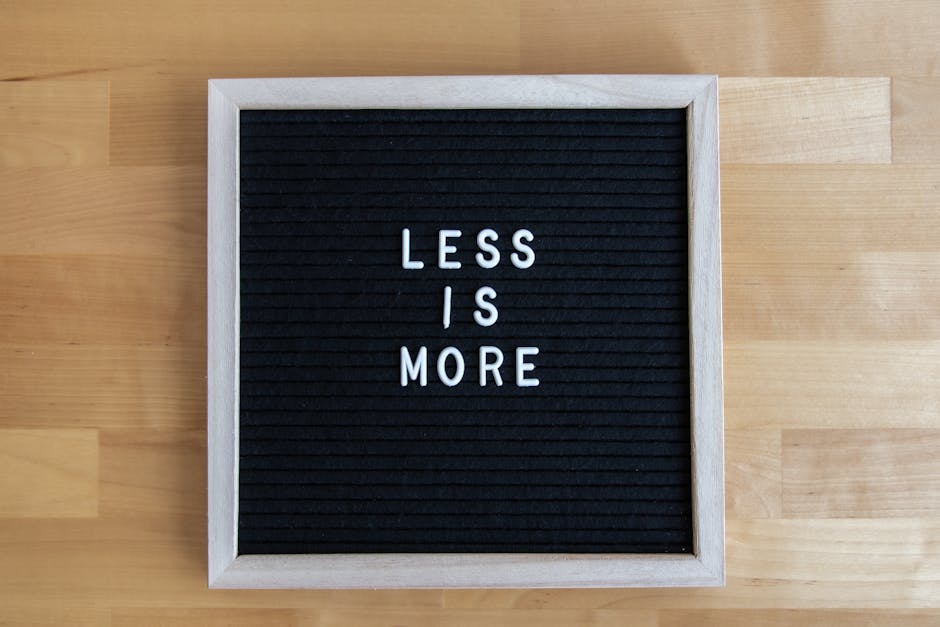Minimalist Upholstery: Less is More
Are you tired of clutter in your home? Minimalist upholstery might be the answer you’ve been looking for. This design trend focuses on simplicity, clean lines, and functionality. it’s not just a style; it’s a lifestyle choice that can transform your space. Let’s dive into what minimalist upholstery is, why it matters, and how you can incorporate it into your home.
What is Minimalist Upholstery?

Minimalist upholstery embraces the idea of “less is more.” It strips away unnecessary elements, showcasing only what is essential. Think of clean lines, neutral colors, and natural materials. This approach helps create a calm, inviting space.
Imagine a sofa with sleek, straight lines in a soft gray fabric. it’s simple yet stylish. This kind of furniture doesnt just look good; it also makes your space feel larger and more open.
Why Choose Minimalist Upholstery?

There are many reasons to opt for minimalist upholstery. Here are a few key benefits:
- Clutter Reduction: Fewer pieces mean less mess. Minimalist upholstery helps keep your space tidy.
- Timeless Style: Simple designs never go out of fashion. You won’t have to worry about your furniture looking dated.
- Easy Maintenance: Minimalist pieces are often easier to clean and maintain. Less fabric means less dust.
- Focus on Quality: When you choose fewer items, you can invest in higher-quality pieces that will last longer.
Research shows that minimalism can boost your mental well-being. Living in a clutter-free space can reduce stress and create a sense of peace. it’s not just about how your home looks; it’s also about how it makes you feel.
How to Incorporate Minimalist Upholstery

Ready to embrace minimalist upholstery in your home? Here are some simple steps to get you started:
1. Choose a Neutral Color Palette
Neutral colorslike whites, grays, and beigescreate a calming environment. They also make it easier to match different pieces. For instance, a light beige sofa looks great with various accent colors in cushions or throws.
2. Focus on Functionality
Each piece of furniture should serve a purpose. Look for items that can do double duty. For example, an ottoman can be a footrest and provide extra storage.
3. Emphasize Clean Lines
Opt for furniture with straight edges and simple shapes. Curvy designs can feel cluttered. A rectangular coffee table or a square chair can keep things looking sharp and tidy.
4. Use Natural Materials
Incorporate fabrics like cotton, linen, or wool. Wood and metal elements can add warmth without overwhelming the space. For example, a wooden dining chair with a simple cushion can add a touch of coziness while remaining minimal.
What Common Misconceptions Exist About Minimalist Upholstery?

Many people have misconceptions about minimalism. Here are a few myths debunked:
Myth: Minimalism is Boring
Some think that minimalist designs lack personality. In reality, they allow your unique style to shine. A few carefully chosen accessories, like a bright throw or a statement vase, can add character.
Myth: it’s Only for Big Spaces
Minimalist upholstery works in any size home. In small spaces, it can actually make rooms feel larger. A few streamlined pieces can create an open, airy feel.
Myth: it’s Too Expensive
While some minimalist furniture can be pricey, many affordable options are available. Look for budget-friendly retailers that offer stylish, simple designs. Thrift stores and online marketplaces can also be great places to find unique minimalist pieces.
What are Some Everyday Examples of Minimalist Upholstery?
Here are a few real-life examples of minimalist upholstery:
- Scandinavian Design: Known for it’s simplicity, Scandinavian design often features light woods and soft fabrics. Think of a light wood dining table with white chairs.
- Modern Offices: Many modern office spaces embrace minimalist upholstery. Simple desks and chairs help create a professional yet inviting atmosphere.
- Small Apartments: In compact living spaces, a sleek, foldable sofa can provide comfort without taking up too much space.
These examples show how minimalism can fit seamlessly into different environments. it’s all about selecting the right pieces that serve a purpose while looking good.
How Can You Maintain a Minimalist Upholstered Space?
Once youve chosen your minimalist upholstery, keeping it looking fresh is important. Here are some easy tips:
- Regular Cleaning: Dust and vacuum regularly to keep surfaces clean.
- Limit Accessories: Resist the urge to overcrowd surfaces with decor. Choose a few meaningful pieces instead.
- Reassess Often: Periodically check your space. If something no longer serves a purpose or brings you joy, consider letting it go.
What Final Thoughts Should You Keep in Mind?
Minimalist upholstery is more than just a trend; it’s a way to simplify and enhance your living space. By focusing on quality, functionality, and aesthetics, you can create a home that feels peaceful and inviting.
To start, evaluate what you truly need and love in your home. Embrace the idea that less can truly mean more. In a world that often feels chaotic, creating a serene space can be a breath of fresh air.
As you embark on your minimalist journey, remember these key takeaways:
- Choose neutral colors for a calming effect.
- Focus on functional pieces that serve a purpose.
- Embrace clean lines and natural materials.
- don’t be afraid to express your style within minimalism.
For more information on minimalist living, check out this resource on minimalism.
Are you ready to transform your home with minimalist upholstery? Start small and see how it can change your space for the better!



